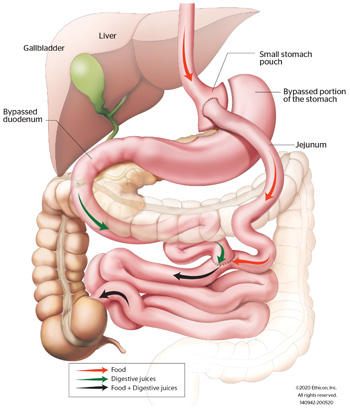Gastric Bypass surgery makes the stomach smaller and allows food to bypass part of the small intestine. The most common gastric bypass surgery is a Roux-en-Y Gastric Bypass. The stomach is made smaller by creating a pouch at the top of the stomach. The smaller stomach is connected directly to the middle portion of the small intestine, bypassing the rest of the stomach and the upper portion of the small intestine. Most people return to their normal activities within 2 to 4 weeks after Gastric Bypass surgery. The result of the surgery is that you will feel full more quickly than when your stomach was its original size. This reduces the amount of food you eat and the calories consumed. Bypassing part of the intestine also results in fewer calories being absorbed. It is important to remember surgery may require you to make several changes in how you eat, such as eating only a few ounces of food at a time because the surgery creates a much smaller stomach.

- Up to 70-80% Excess Weight Loss After 12 Months*
- Portion Control
- Blunts Appetite
- Reduced Caloric Absorption
- Cures 95% of Type 2 Diabetes
- Laparoscopic
- Most Home the Next Day














